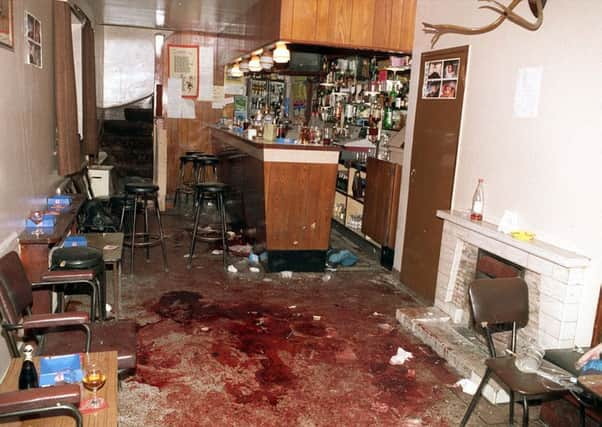Security Forces' '˜significant collusion' in World Cup pub murders


One suspect in the Ulster Volunteer Force (UVF) attack on the Heights Bar in Loughinisland, Co Down in 1994 was a police informant, Northern Ireland’s Police Ombudsman Dr Michael Maguire said.
Among other damning findings, Dr Maguire said the murder squad that carried out the mass shooting had been involved in a number of other murders in the period beforehand, but had avoided arrest because the Royal Ulster Constabulary’s Special Branch intelligence unit had withheld evidence from RUC detectives investigating the crimes.
Advertisement
Hide AdAdvertisement
Hide AdDr Maguire said some Special Branch officers had a “hear no evil, speak no evil, see no evil” mind-set that placed the collection of information above the detection of crime.
“When viewed collectively, I have no hesitation in saying collusion was a significant feature of the Loughinisland murders,” he said.
While acknowledging some officers worked tirelessly to catch the killers, the Ombudsman described failures in the overall investigation as “catastrophic” and said in too many instances the probe was characterised by “incompetence, indifference and neglect”.
Two UVF gunmen burst into the packed bar at around 10.10pm on June 18 1994 and fired at customers watching the Republic of Ireland play Italy in the World Cup in the USA. Six were killed and five others were injured.
Advertisement
Hide AdAdvertisement
Hide AdThe Ombudsman also examined the role of police informants in efforts by loyalist paramilitaries to smuggle weapons into Northern Ireland from abroad during the mid to late 1980s.
He found that security forces were monitoring the importation bids and information provided by state agents in high positions within the paramilitary groupings helped lead to the recovery of a significant number of the weapons.
But the watchdog questioned why many still ended up in the hands of loyalist killers.
He said unrecovered weapons from the shipments were used in 70 murders and attempted murders, including those at Loughinisland.
Advertisement
Hide AdAdvertisement
Hide AdThe Ombudsman said there was no evidence the security forces had forewarning of the Loughinisland attack.
He claimed that in the wake of the murders, the Special Branch did not appear use their sources in an effort to catch the killers.
“I have found no evidence that sources were tasked with gathering specific information that could have assisted the murder investigation,” he said.
“This was a ‘hear no evil, speak no evil, see no evil’ approach to the use of some informants, which potentially frustrated the police investigation.”
Advertisement
Hide AdAdvertisement
Hide AdDr Maguire said many officers in the RUC and their successors in the Police Service of Northern Ireland (PSNI) worked tirelessly to catch the killers.
But he also identified a series of major failures in the investigation that followed the murders.
No one has ever been brought to justice.
A report by previous Police Ombudsman Al Hutchinson in 2011 found that the RUC failed to properly investigate what happened in Loughinisland but said there was insufficient evidence of collusion.
Those findings were quashed after a legal challenge by relatives of those killed and Dr Maguire subsequently undertook a fresh investigation.
Those murdered were Barney Green, 87; Adrian Rogan, 34; Malcolm Jenkinson, 53; Daniel McCreanor, 59; Patrick O’Hare, 35; and Eamon Byrne, 39.